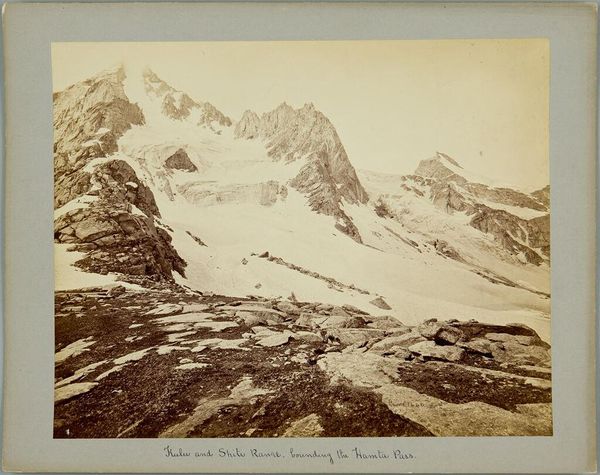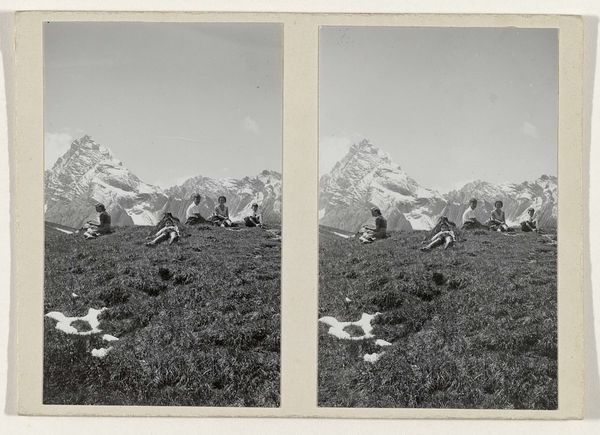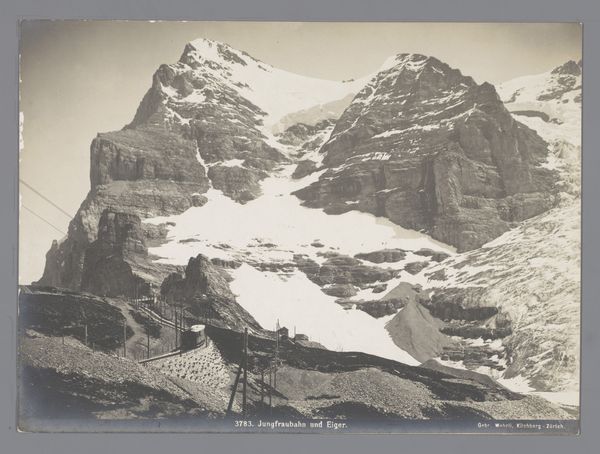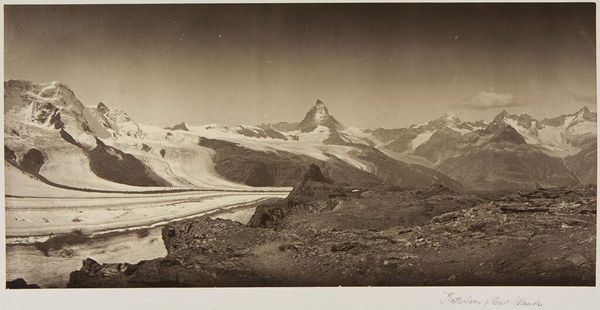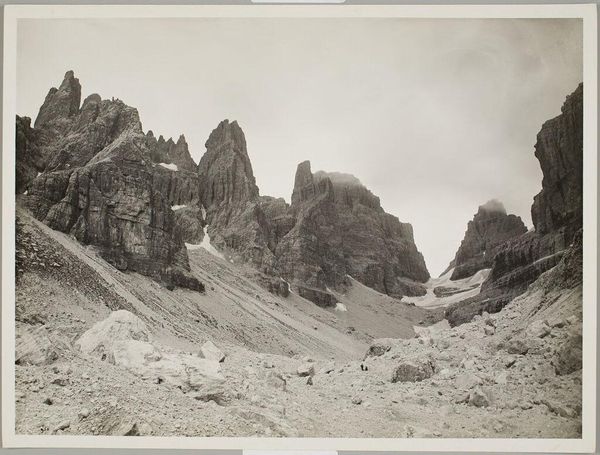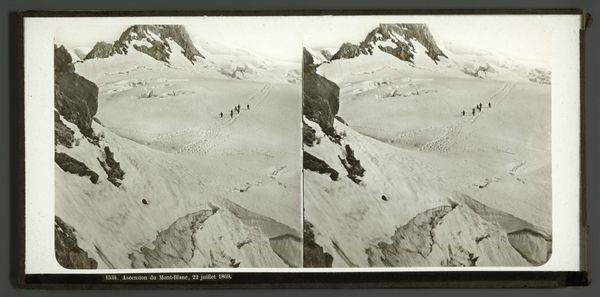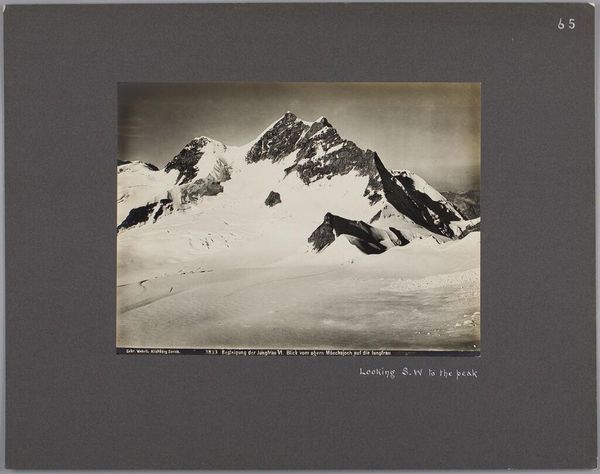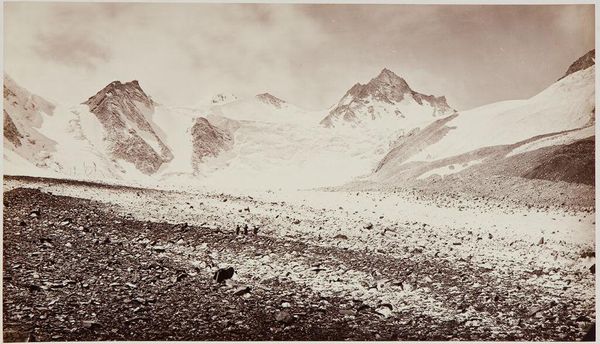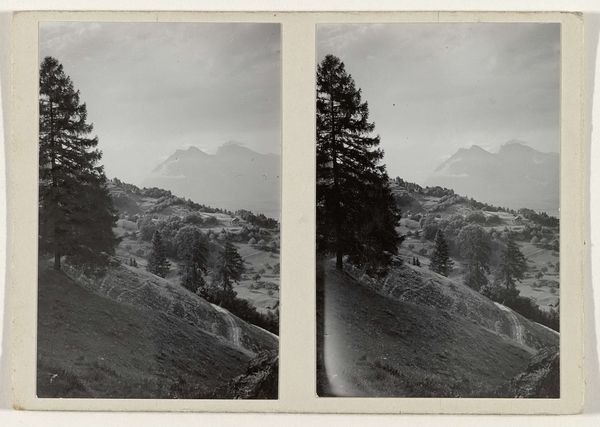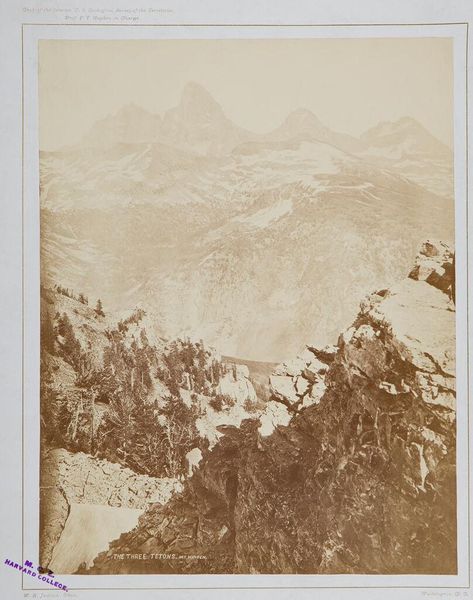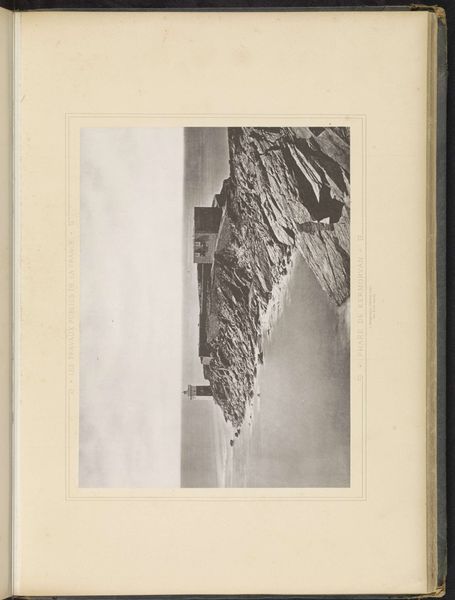
Drie wandelaars op een stenenveld met op de achtergrond de besneeuwde toppen van een berglandschap c. 1920 - 1945
geldolphadriaankessler
Rijksmuseum
photography, gelatin-silver-print
landscape
photography
gelatin-silver-print
realism
Dimensions: height 80 mm, width 104 mm
Copyright: Rijks Museum: Open Domain
Editor: This gelatin silver print, "Three Walkers in a Stony Field with Snow-Covered Peaks of a Mountainous Landscape in the Background", by Geldolph Adriaan Kessler, somewhere between 1920 and 1945, strikes me as both vast and intimate. The sheer scale of the mountains is incredible, yet the three tiny figures create an unexpectedly human connection. What stands out to you? Curator: It's a work that excels in contrasting textures. Consider the granular foreground—the play of light and shadow on each individual rock and the coarse quality of the stone itself—versus the smooth, almost ethereal quality of the snow-covered peaks in the background. Do you see how the tonal range works? Editor: Yes, there's definitely a clear distinction, almost like a visual separation. The stark white peaks draw your eye upward. What’s the effect of having three figures in the foreground, distributed in each frame? Curator: It structures the composition. The three figures are placed deliberately. See how they create a horizontal line that subtly guides the eye? The figures themselves can also be understood as an application of Realism within landscape, and so representational art serves its formal aspects first and foremost. Note the semiotics that we use to recognize figures are reduced in the photograph's structure. How does that inform your perspective? Editor: That’s interesting! I hadn't considered that they were carefully placed like that. The distribution through the frames, one to each and a pair on one, seems less a part of realism now and more a part of that structural intent. Curator: Precisely. This underscores how formalism analyzes elements like line, shape, form, light, and how these work together irrespective of the subject represented. And through that, this image allows a compelling glimpse into a bygone era of landscape photography. Editor: Thanks, I see it now in a completely new light, looking closer at just those lines and the use of contrast to draw you through the piece rather than at what's depicted first. Curator: And the pleasure in that allows for continuous reflection and discussion.
Comments
No comments
Be the first to comment and join the conversation on the ultimate creative platform.
